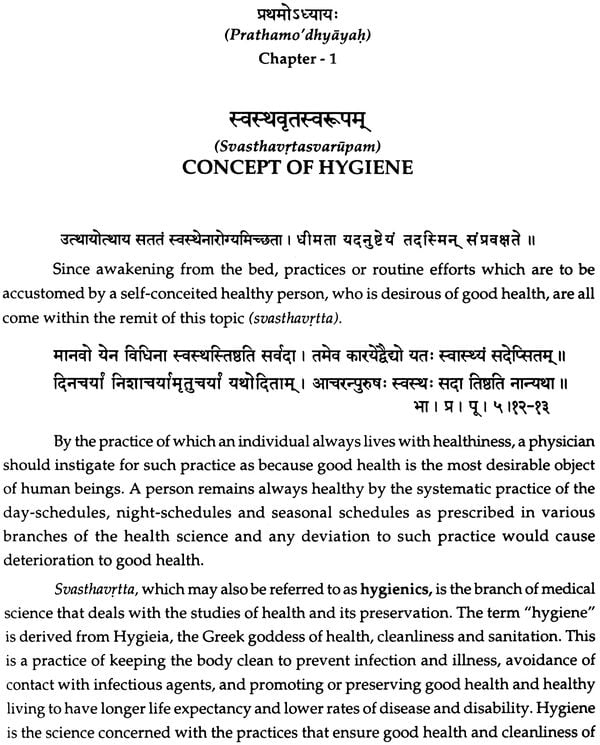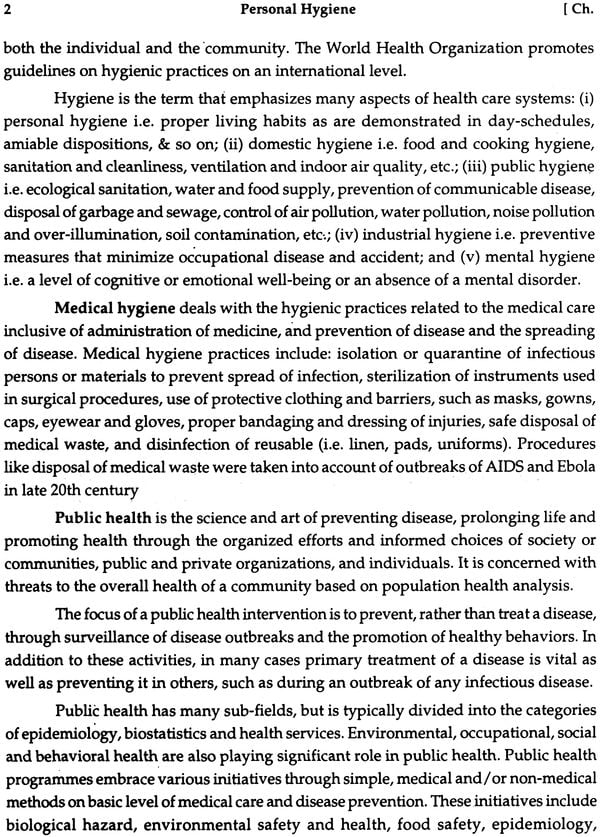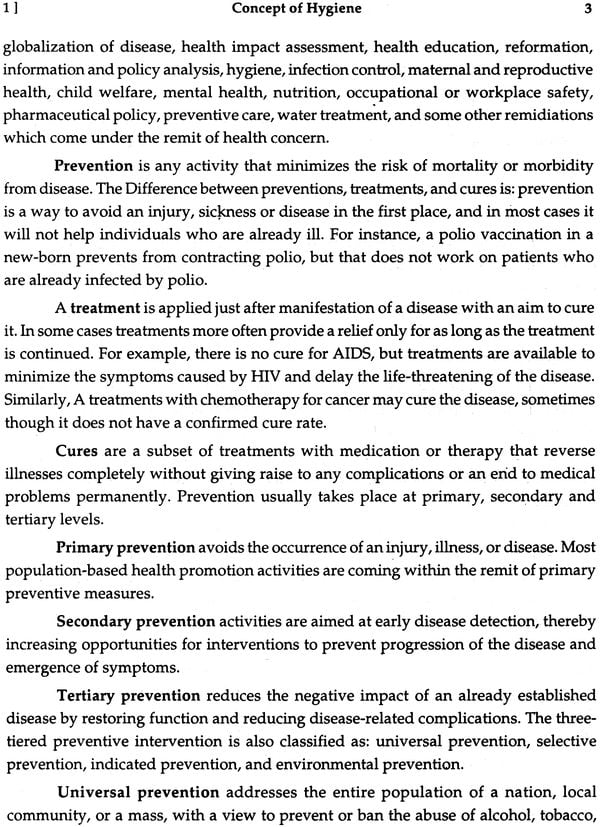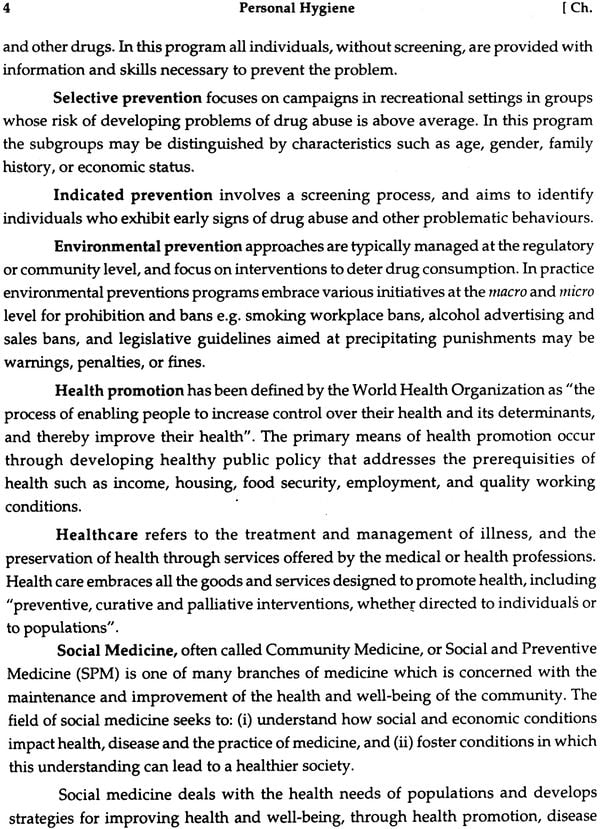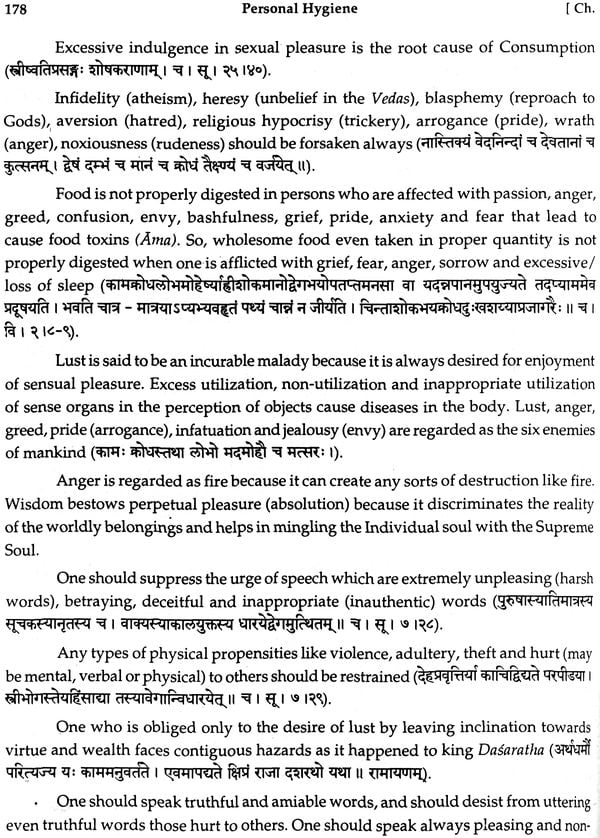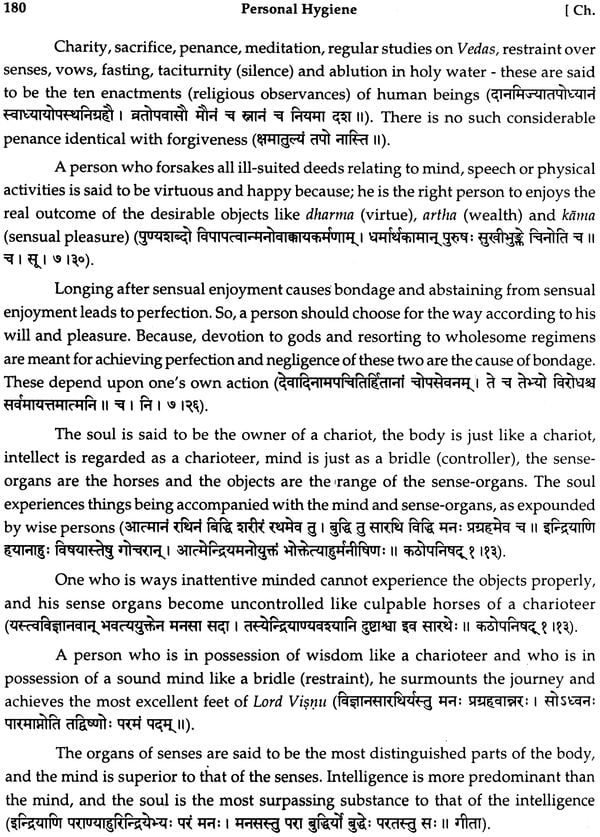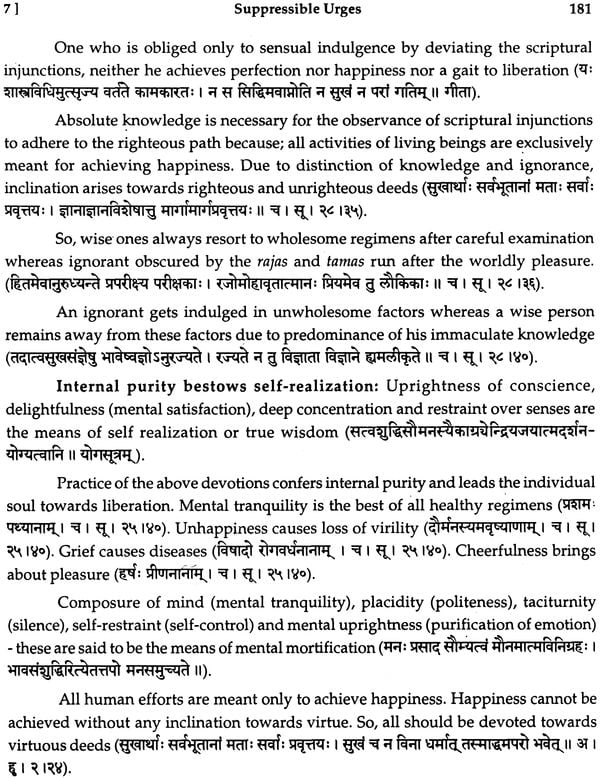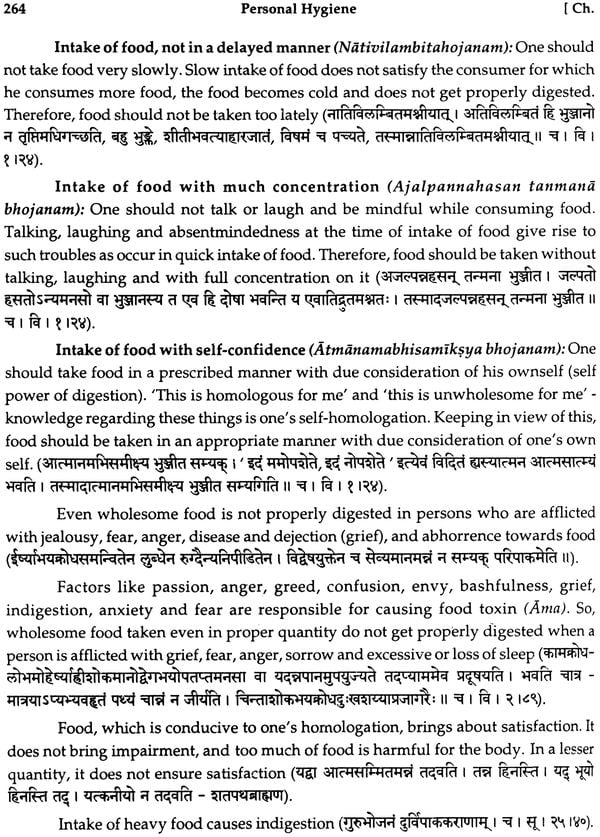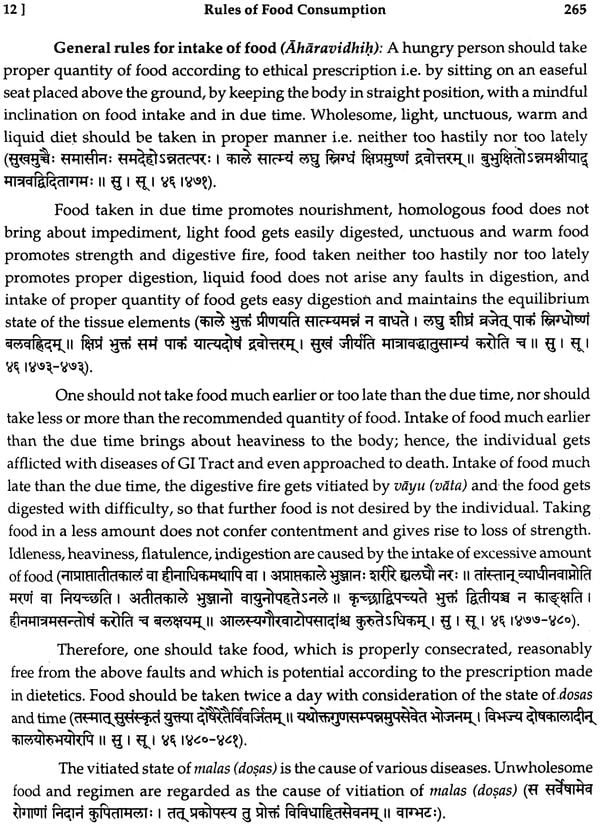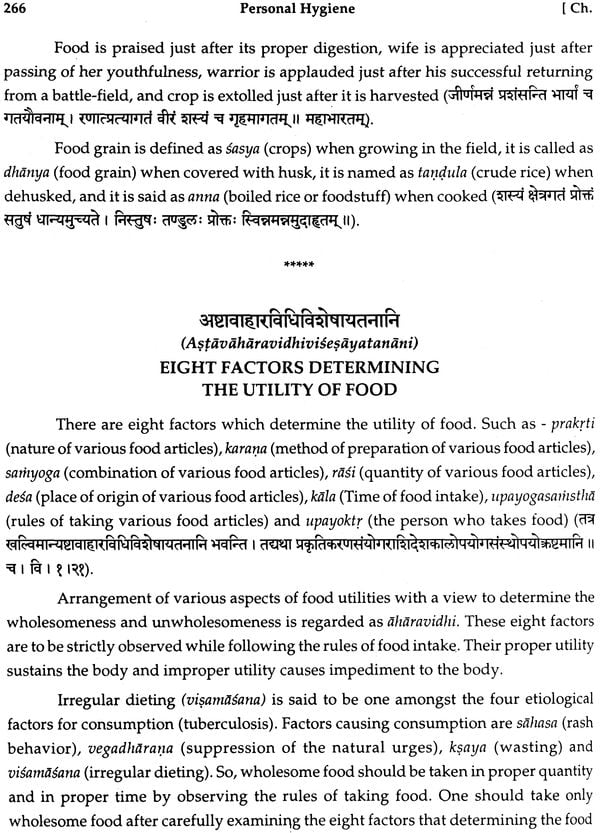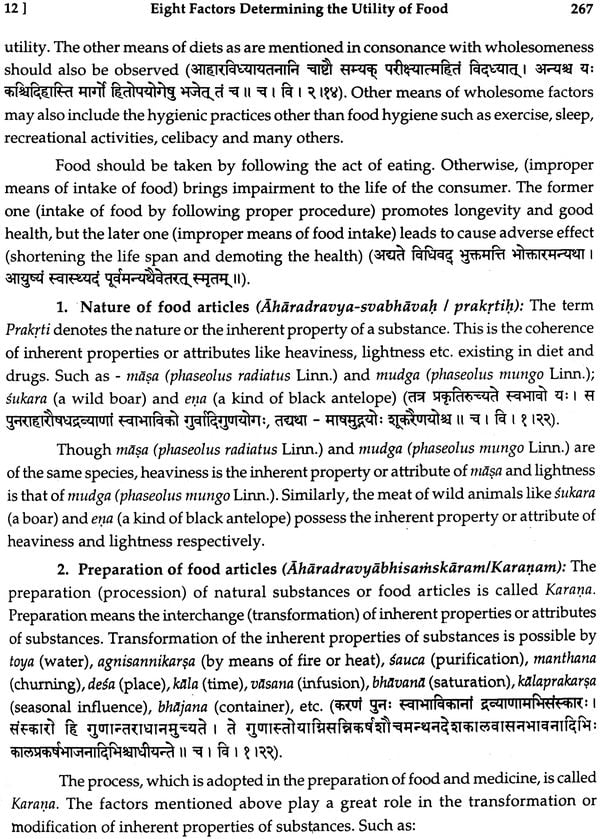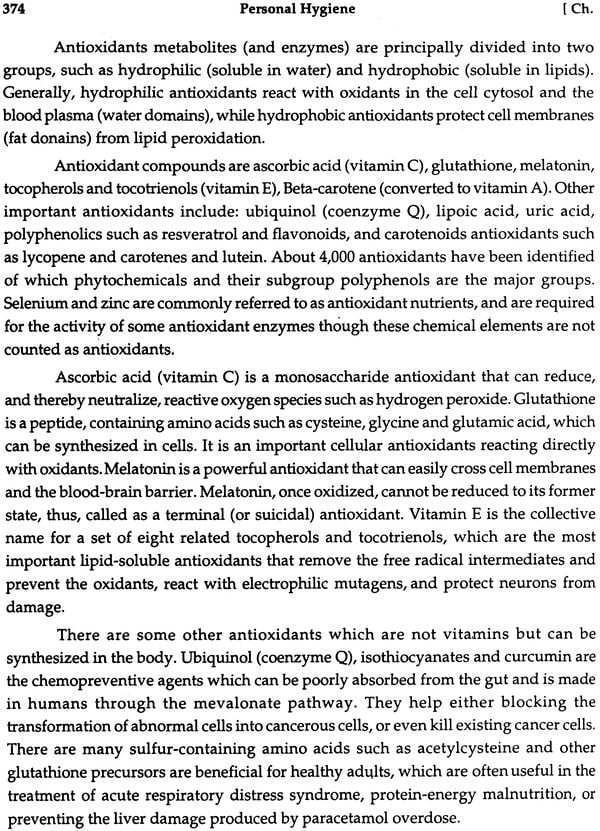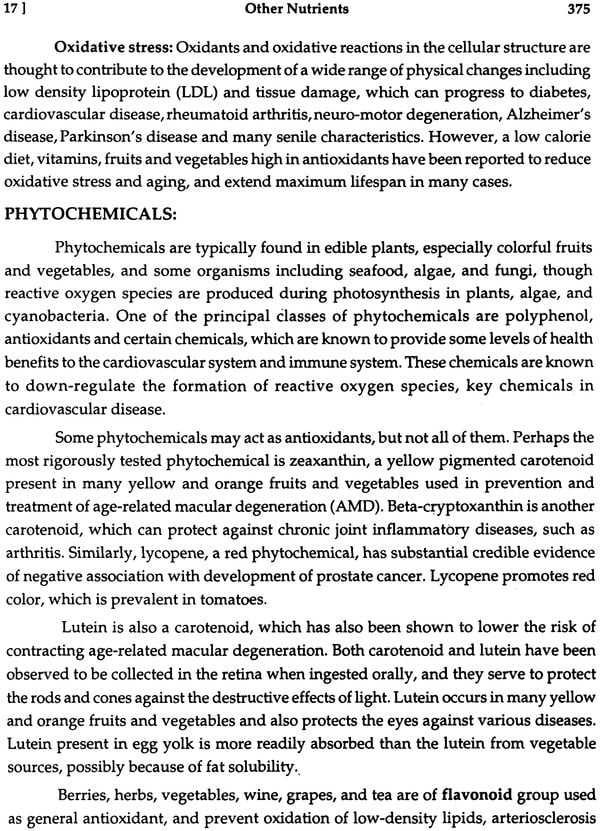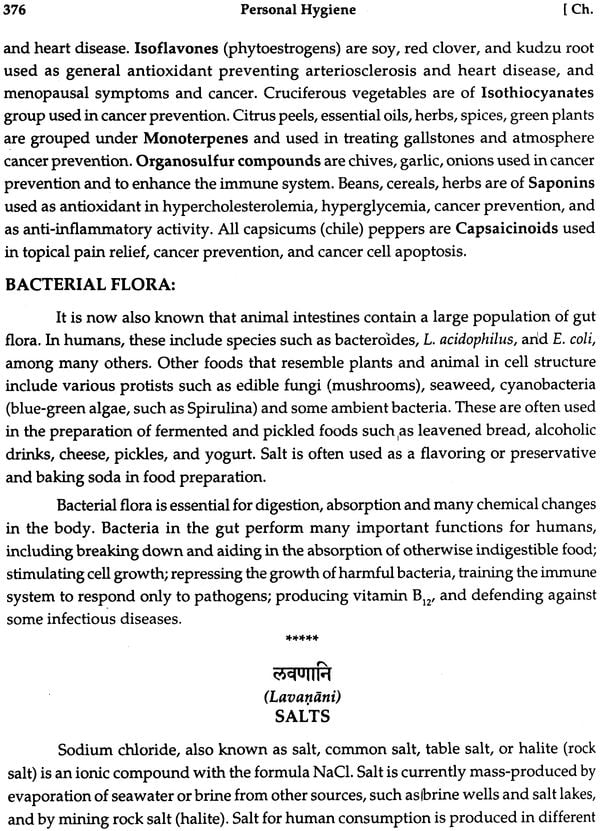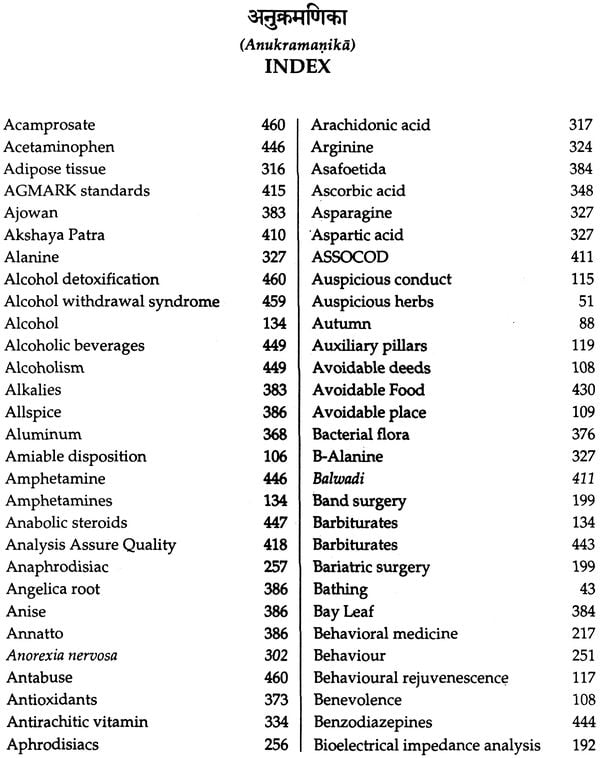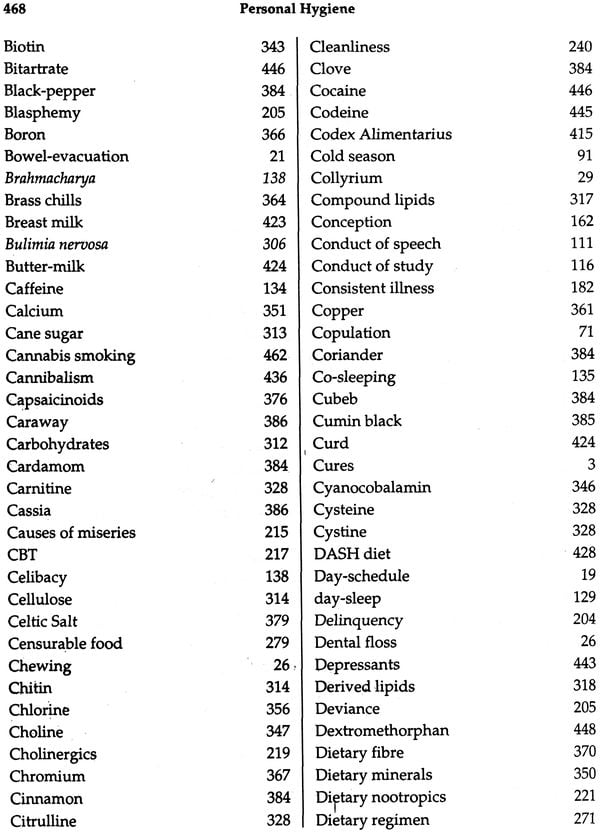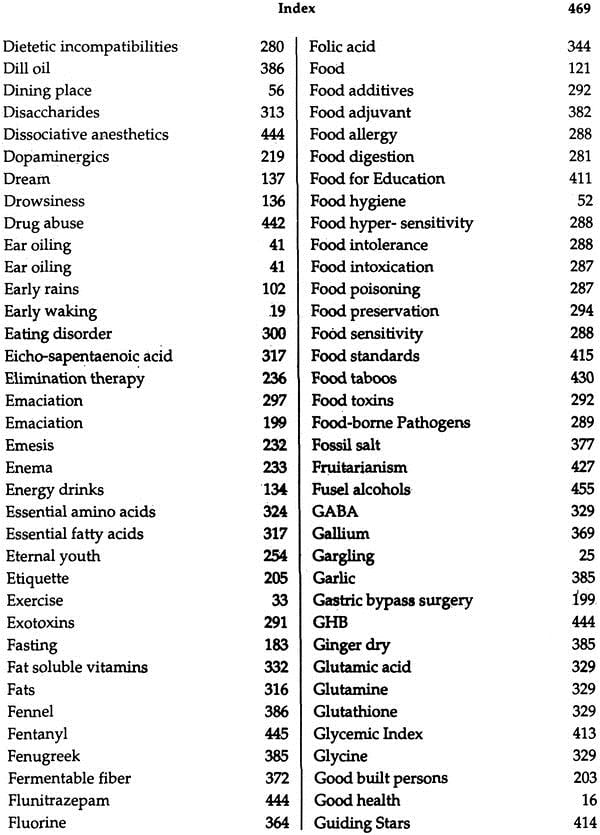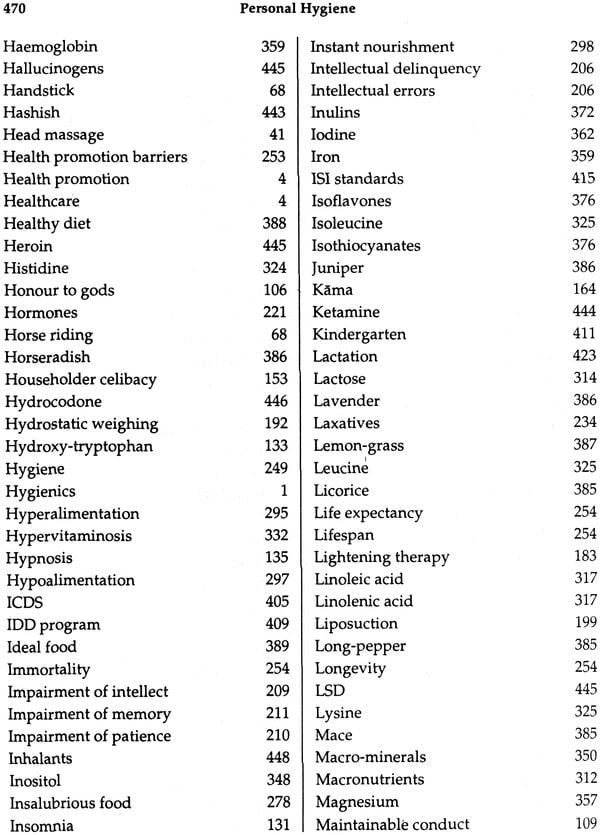
Svasthavrttam Part - I Text and English Version with Modern Views on Personal Hygiene
Book Specification
| Item Code: | IHK028 |
| Author: | Dr. GhanashyamDora |
| Publisher: | Chowkhamba Sanskrit Series Office |
| Edition: | 2010 |
| ISBN: | 9788170803324 |
| Pages: | 528 |
| Cover: | Paperback |
| Other Details | 9.5 inch X 7.3 inch |
| Weight | 760 gm |
Book Description
About the Book
The text ‘Svasthavritta’ compiled by Dr. Ghanashyam Dora is a comparative expression of the basic therapeutic approach of ancient Indian System of Medicines and modern facts and trends meant for maintenance and promotion of good health, prevention of diseases and cure of illness. This edition covers the entire syllabus at UG and PG levels, as prescribed by CCIM, and is substantiated with health-provoking elements, which will be of enormous necessity and constant source of impetus to the student of Ayurvedic discipline.
Prevention is any activity which reduces the risk of morality or morbidity from disease, and initiates to abate the transmission of diseases and deaths caused by food incompatibilities, pollution, aging, injury, drug abuse and environmental or ecological factors. This edition deals with vast and varied specialities of medicine that encompasses physical, psychological, emotional, and social well being so as to have longer life expectancy and lower rates of disability.
Despite these, this branch of Medicine addresses all human-health-related aspects of both the natural environment and the built environment, and provides the ways of combating the onset and threats of potentially detrimental/infectious diseases and epidemics, may be endemic, pandemic or syndemic nature, which are extensively prevalent among a group of human population of a region, caste, creed and may other boundaries. Preventive & Social Medicine also deals the ongoing policies and programmes envisaged by WHO and other health-related National and International Organizations that come within the remit of health and safety. Everywhere of this edition, the readers will be pleased to experience the healthcare measures revealed extensively in the spheres of Ayurveda, India Philosophical Schools, ethics and spiritualism, and modern medical viewpoints as well.
Foreword
Ayurveda being a holistic science of life rather medicine, has its foremost importance and aim how to maintain the health of the healthy person and also provides the preventive, promotive and curative aspects of positive and complete health. It is also a well-known fact that it is the Ayurvedic science which defines the complete definition of health, and which is now accepted by the World Health Organization. The description about the psychosomatic concept of life is also the unique concept of this science, which has been mentioned long long ago, when other medical sciences were not awaring about.
Hence it is very clear that Ayurveda has a big treasure of knowledge; not only to cure the diseases but also have a unique, specific and elaborative knowledge in the field of health sciences and it is termed as Svasthavrittam. The word Svasthavrittam itself recommend its meaningful meaning that the routine and behaviour of the person which keeps the men healthy as well as such routine which is to be followed by the healthy person to keep and maintain healthy state “svasmin tisthati yah sa svasthah”. It indicates the particular state of the purusha in which all the components of purusha viz. body, and its contents like dosa, dhatu and malas along with upadhatus too, are in such pramana, means in equilibrium state that performing their normal functions.
Since the subject of Svasthavritta has elaborately described in Samhitas and other classics of Ayurveda, but it even requires its clarification in such a way so that it may be easily assimilated by the society as well as the scholars. Hence there is absolutely need of such texts, especially as per the need of time in English language. Dr Ghanashyam Dora has tried and made great efforts to provide such a text to fill the need of the time in form of a textbook to the students. I read the book thoroughly and found it is much suitable and able to communicate the textual knowledge, in easy and palatable form to get and understand the subject on scientific way and applicable ground.
I congratulate Dr. Dora for his efforts and hope that his valuable efforts would certainly be accepted by the society, and wish all the success in his academic carrier.
Foreword
The text ‘Svasthavrittam’ compiled by Dr. Ghanashyam Dora is an anthology of soothsayings in consonance with various health related issues of paramount Importance. Each and every topic of this text is endowed with the fundamentals of Ayurvedic doctrines, codes of conduct, sustenance of individual and social life as well as philosophical and spiritual practices implicated with the Ayurvedic standpoint. This text is also a culmination of meticulously identified thoughts, physical and metaphysical vision of life lying scattered in the splendidly enriched storehouse of Ayurvedic Science. The text, therefore, explicitly aims at inviting the interest of the individuals towards sustenance of good health as well as prevention of disease and disability which is certainly an unparalleled contribution of India to the global people disseminating the massage of amity, world peace, sound health and mind perpetually. the approach of this text is evidently getting more and more importance inn the perspective of multifarious contra-indications and side-effects of modern medicine Eventually, the mankind, as a whole, is seeking shelter in the safe, peaceful and echofriendly custody of the Ayurveda for obvious reasons.
In view of changing world scenario of the present time, the Ayurvedic system of medicine and treatment is regaining its pristine status as well as inviolable state of application to the people of the globe irrespective of caste, creed and religion. Taking all these facts and trends into account, Dr. Dora, an eminent physician, teacher cum-Sanskritist has sincerely endeavoured to expatiate these hygienic soothsayings in this present edition for the benefit of mankind in the form of lucidification with excellent exposition and excogitation of the said text in a vivacious and commendable manner. Everywhere of this edition, the readers will be pleased to experience the profoundness of knowledge of Dr. Dora revealed extensively in the spheres of Ayurveda, Sanskrit literature both Vedic and classical, viewpoints of Indian Philosophical Schools, ethics and spiritualism as well. The present edition is substantiated with thought-provoking elements, which, I believe, will be of enormous necessity and constant source of impetus to the students of Ayurvedic discipline.
Dr. Ghanahyam Dora has also been successful in appeasing the aspirations of the general readers with the capacity of his stunning style of delineation blended with classical taste. I am of firm belief that by dint of his preserved edition, Dr. Dora will be aptly appreciated by the intelligentia and recognized by and by as one of the exponents who worked hard for ameliorating and popularizing the Ayurveda for veritable service of the mankind.
| Chapter - 1 | ||
| (i) | (Svasthavrttasvarupam) Concept of Hygiene | 1 |
| (ii) | (Svasthavrttaprayojanam) Objectives of Hygiene | 5 |
| (iii) | (Svasthalaksanam) Characteristics of Good Health | 9 |
| (iv) | (Svasthyalaksanam) Characteristics of Healthy Individuals | 14 |
| Chapter - 2 | ||
| (Dinacarya prakaranam) Day Schedules | 19 | |
| (i) | (Pratahsayyatyagah) Early Waking | 19 |
| (ii) | (Malamutrotsargah) Evacuation of Bowels | 21 |
| (iii) | (Mukhasodhanam) Oral Hygiene | 23 |
| (iv) | (Nsyavidhih) Nasal Therapy | 27 |
| (v) | (Anjanam) Collyrium | 29 |
| (vi) | (Dhumapanam) Medicated Smoking | 30 |
| (vii) | (Sarirasauca) Physical Cleanliness | 32 |
| (viii) | (Vyayamah) Exercise | 33 |
| (ix) | (Abhyangah) Massage | 40 |
| (x) | (Snanam) Bathing | 43 |
| (xi) | (Prasadhanani) Toiletries | 48 |
| (xii) | (Bhojanam) Food Hygiene | 52 |
| (xiii) | (Bhojanottarasvasthyaraksa) Hygiene after taking food | 62 |
| (xiv) | (Usnisadi-dharanam) Use of Turban &c. | 66 |
| Chapter - 3 | ||
| (Ratricarya prakaranam) Night Schedules | 69 | |
| Chapter - 4 | ||
| (Ratricarya prakaranam) Seasonal Schedules | 81 | |
| (i) | (Varsa-rtucarya) Observances in Rainy Season | 84 |
| (ii) | (sarad-rtucarya) Observances in the Autumn | 88 |
| (iii) | (Hemanta-rtucarya) Observances in Cold Season | 91 |
| (iv) | (Sisira-rtucarya) Observances in the Winter | 94 |
| (v) | (Vasanta-rtucarya) Observances in the Spring | 95 |
| (vi) | (Grisma-rtucarya) Observances in Summer | 100 |
| (vii) | (Pravrt-rtucarya) Observances in Early Rains | 102 |
| (viii) | (Samanyartucarya) Seasonal Schedules in general | 104 |
| (ix) | (Rtusandhih) Seasonal Junction | 104 |
| (x) | (Yamadamstra) Seasonal Libation | 105 |
| Chapter - 5 | ||
| (i) | (Sadvrtam) Amiable Dispositions | 106 |
| (ii) | (Sadvrttamahattvam) Advantages of Amiable dispositions | 116 |
| (iii) | (Achararasayanam) Behavioural Rejuvenescence | 117 |
| Chapter - 6 | ||
| (i) | (Trayopasthambhah) Three Sub-posts | 119 |
| (ii) | (Aharah) Food | 121 |
| (iii) | (Nidra) Sleep | 125 |
| (iv) | (Svapnah) Dream | 137 |
| (v) | (Brahmacaryam) Celibacy | 138 |
| (vi) | (Abrahmacaryah) Householder’s Celibacy | 153 |
| Chapter - 7 | ||
| (i) | (Adharaniyavegah) Non-suppressible Urges | 166 |
| (ii) | (Dharaniyavegah) Suppressible Urges | 176 |
| (iii) | (Sada’’ turah purusah) Persons of Consistent Illness | 182 |
| Chapter - 8 | ||
| (i) | (Upavasah/Langhanam) Fasting (Lightening Therapy) | 183 |
| (ii) | (Ninditah purusah) Undesirable Persons | 190 |
| (iii) | (Atisthaulyam) Over-corpulence (Obesity) | 191 |
| (iv) | (Atikarsyam) Excessive Emaciation | 199 |
| (v) | (Aninditah purusah) Good Built Persons | 203 |
| Chapter - 9 | ||
| (i) | (Aparadham) Delinquency | 204 |
| (ii) | (Prajnaparadham) Intellectual Delinquency | 206 |
| (iii) | (Upadha) Sensual Desire | 222 |
| Chapter - 10 | ||
| (i) | (Sarirasamsodhanam) Purifying Measures of the Body | 231 |
| (ii) | (Saucah) Purity | 240 |
| Chapter - 11 | ||
| (i) | (Sarirasamhraksanam) Protective Measures of the Body | 246 |
| (ii) | (Sariraraksa-sadhanani) Means of Natural Health | 249 |
| (iii) | (Jivitakanksa) Life Expectancy | 254 |
| Chapter - 12 | ||
| (i) | (Aharavidhih) Rules of Food Consumption | 258 |
| (ii) | (Astavaharavidhivisesayatanani) Eight Factors Determining the Utility of Food | 266 |
| (iii) | (Pathyapathyaharah) Dietary Regimen | 271 |
| (iv) | (Pathyaharah) Wholesome Food | 275 |
| (v) | (Apathyaharah) Insalubrious Food | 278 |
| Chapter - 13 | ||
| (i) | (Ahara-parcanakalah) Duration of Digestion | 281 |
| (ii) | (Ahara-dusparinamaja-rogah) Diseases caused by Indigestion | 283 |
| (iii) | (Aharaja-vikarah) Food-born Illnesses | 287 |
| (iv) | (Santarpanaja-rogah) Diseases caused by Heperalimentation | 295 |
| (v) | (Apatarpanaja-rogah) Diseases caused by Malnourishment | 297 |
| (vi) | (Bhaksavikarah) Eating Disorders | 300 |
| Chapter - 14 | ||
| (i) | (Ahara-pramana-posanam) Nutritional Value of Food | 310 |
| (ii) | (Aharadravyani) Nutrients | 311 |
| (iii) | (Svetasaraharah) Carbohydrates | 312 |
| (iv) | (Snehasaraharah) Fats | 316 |
| (v) | (Paustikaharah) Proteins | 320 |
| Amino Acids | 322 | |
| Chapter - 15 | ||
| (Jivatiktakah) | 331 | |
| (a) Fat soluble Vitamins | 332 | |
| (b) Water soluble Vitamins | 338 | |
| Chapter - 16 | ||
| (Aharopayogi-dhatavah) Dietary Minerals | 350 | |
| (a) Major Minerals | 351 | |
| (b) Minor or Trace Minerals | 359 | |
| Chapter - 17 | ||
| (i) | (Anyanyaharadravyani) Other Nutrients | 370 |
| (a) Dietary fibre | 370 | |
| (b) Antioxidants | 373 | |
| (c) Phytochemicals | 375 | |
| (d) Bacterial flora | 376 | |
| (ii) | (Lavanani) Salts | 376 |
| (iii) | (Aharayogi-dravyani) Food adjuvants | 382 |
| Chapter - 18 | ||
| (i) | (Adarsaharah) Healthy diet | 388 |
| (ii) | (Sadrasabhojanasya mahattvam) Importance of Six Tastes in Food | 391 |
| (iii) | (Avasthanusaramaharam) Nutrition in various stages of Life | 393 |
| (iv) | (Desanurupam posana-manapariksa) Social Aspect of Nutrition | 400 |
| (v) | (Samajika-posana-parinamah) Social Problems of Nutrition | 402 |
| (vi) | (Rastriyaposanakaryakramah) National Programs on Nutrition | 403 |
| Chapter - 19 | ||
| (i) | (Aharapariksanam) Nutrional Rating & Food Standards | 413 |
| (ii) | (Mamsapariksanam) Meat Hygiene | 416 |
| (iii) | (Dugdhapariksanam) Milk Analysis | 419 |
| (iv) | (Sakaharah) Vegetarian Food | 425 |
| (v) | (Mamsaharah) Non-vegetarian Food | 429 |
| (vi) | (Mamsaharah) Non-vegetarian Food | 429 |
| (vii) | (Aharamatra) Quantity of Food | 437 |
| Chapter - 20 | ||
| (i) | (Madakadravyanam prabhavah) Effects of Narcotics | 441 |
| (ii) | (Madakadravyapayogah) Drug Abuse/Addiction | 442 |
| (iii) | (Madyapanam) Alcoholism | 450 |
| (iv) | (Dhumapanam) Smoking | 461 |
| (Anukramanika) Index | 467 | |
| (Slokanukramanika) sloka-series | 475 | |
| (subhasitani) Soothsayings | 497 | |
| (Sanksepana) Abbrevation | 503 |
